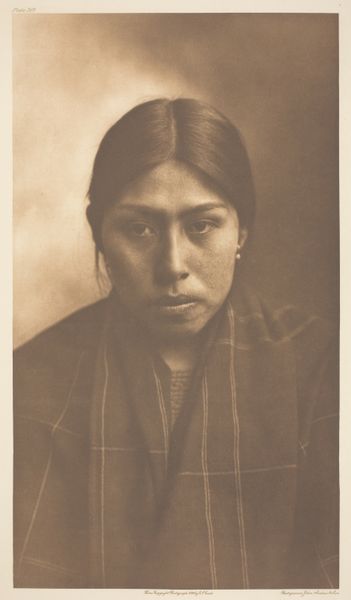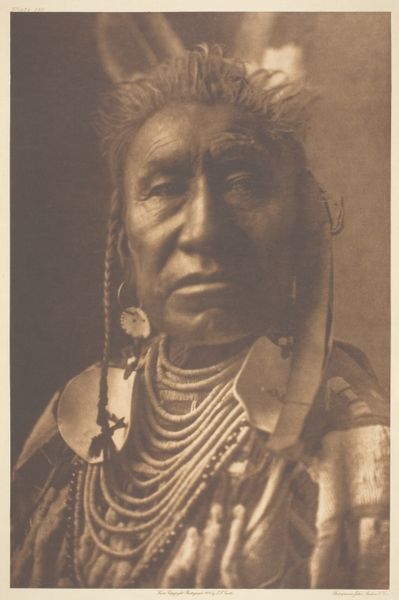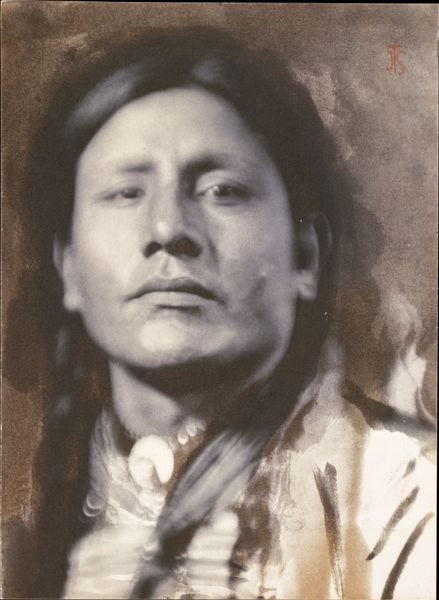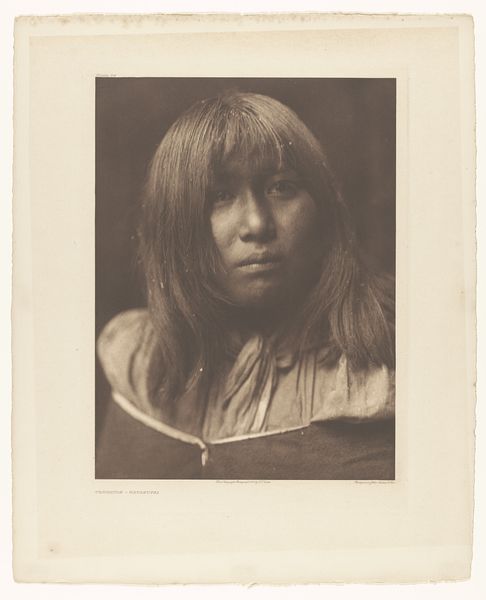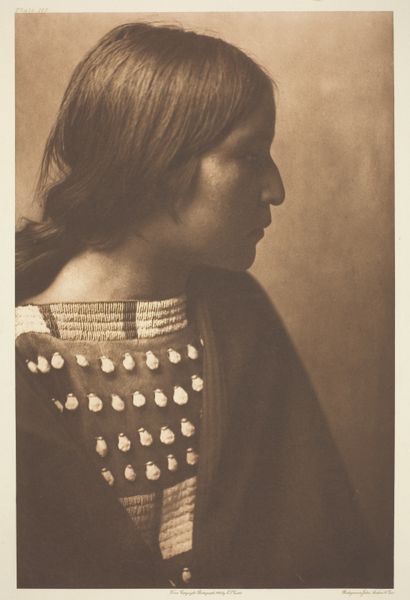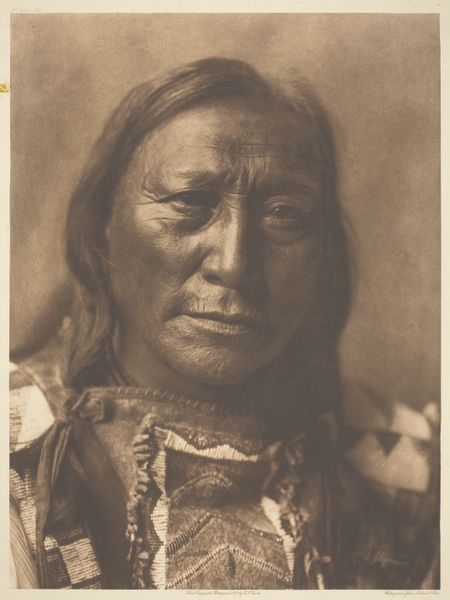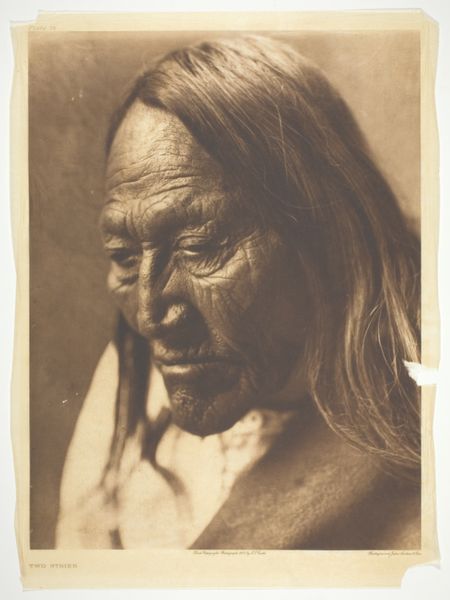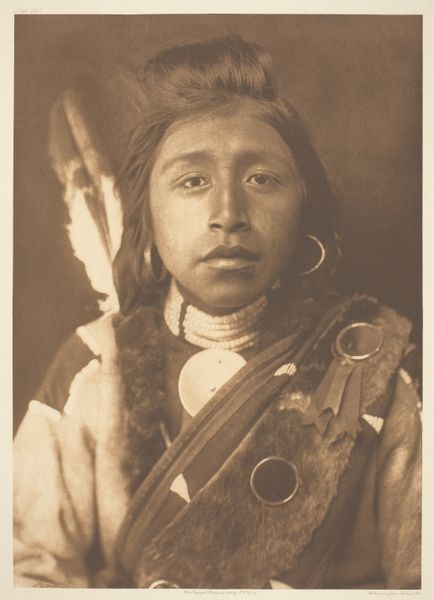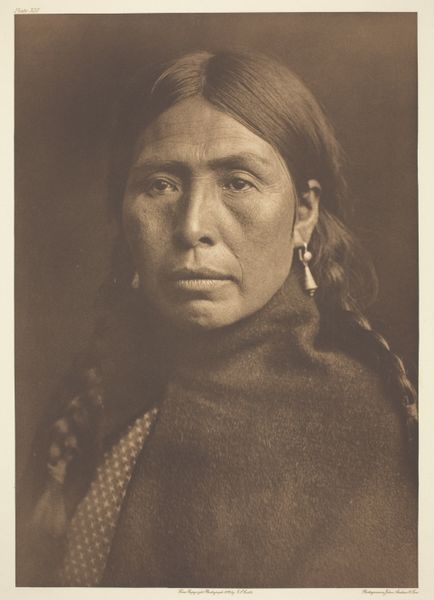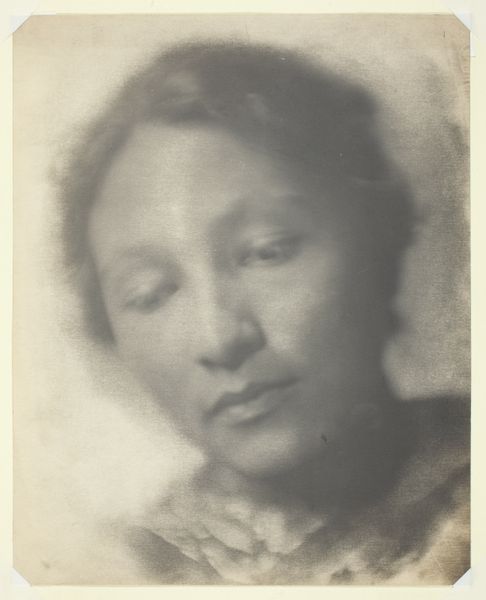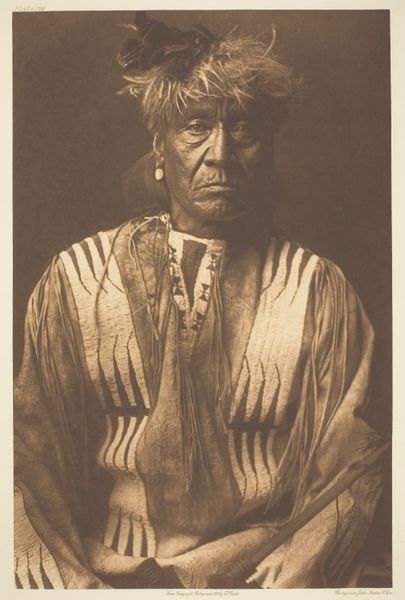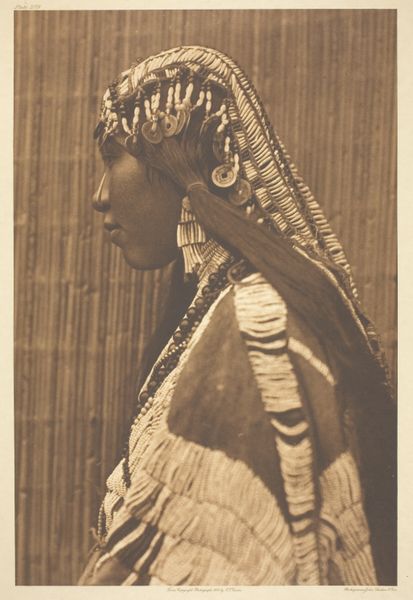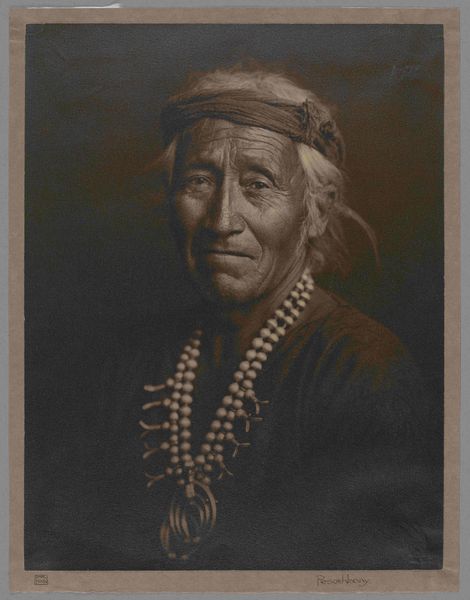
photography, gelatin-silver-print
#
portrait
#
pictorialism
#
photography
#
gelatin-silver-print
Dimensions: 19.8 x 14.5 cm. (7 13/16 x 5 11/16 in.)
Copyright: Public Domain
Curator: This somber image before us, “Indian Head,” was captured in 1898 by Joseph T. Keiley, now held at the Metropolitan Museum of Art. What are your first impressions? Editor: The softness is immediately striking. It feels almost like a charcoal drawing, but with this ethereal quality that's also deeply melancholic. The subject's gaze, averted from us, seems to hold so much untold history. Curator: Absolutely. Keiley was a key figure in the Pictorialist movement, where photography was elevated to an art form mimicking painting and drawing through soft focus and manipulated prints. The photograph isn’t simply capturing reality; it's an artistic interpretation, often infused with subjective emotion. Editor: That elevation is, for me, complicated. Who gets to interpret and represent whom? This image and others like it, are powerful in the representation they put forth, yet can serve a flattening. Is Keiley contributing to or questioning the colonial gaze prevalent at the time? Curator: It's essential to examine this through a socio-historical lens, precisely. In the late 19th century, the romanticized image of the "noble savage" was popular, simultaneously exoticizing and lamenting the perceived disappearance of Indigenous cultures. We need to think about who commissioned such works, how they were displayed, and what ideological work they performed. Editor: The framing is important, isn't it? By presenting it as fine art within the museum context, does it create a distance between the viewer and the actual lived experience of Indigenous peoples? Is there a conversation to be had with modern Indigenous voices about such depictions, in efforts of resisting colonial erasure? Curator: Those crucial contemporary dialogues challenge institutions to engage with these fraught histories more openly and collaboratively. The politics of imagery is vital, influencing not just our understanding of the past but shaping our present-day attitudes towards representation, identity, and cultural memory. Editor: The light emphasizes specific facial features—the strong brow, the line of the nose, drawing us into some notion of archetypical representation while perhaps masking some of the sitter's unique individuality, experiences. How can we ensure that looking at this image now promotes understanding over generalization? Curator: By encouraging that critical viewing and conversation we are doing right now. These are essential discussions—contextualizing the history and implications of such imagery. Editor: True, acknowledging complexity can start from a single image. Curator: A vital step. Thank you.
Comments
No comments
Be the first to comment and join the conversation on the ultimate creative platform.

